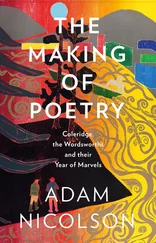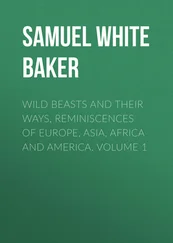Leopold Wagner - Names - and Their Meaning
Здесь есть возможность читать онлайн «Leopold Wagner - Names - and Their Meaning» — ознакомительный отрывок электронной книги совершенно бесплатно, а после прочтения отрывка купить полную версию. В некоторых случаях можно слушать аудио, скачать через торрент в формате fb2 и присутствует краткое содержание. Жанр: Эзотерика, foreign_religion, foreign_antique, на английском языке. Описание произведения, (предисловие) а так же отзывы посетителей доступны на портале библиотеки ЛибКат.
- Название:Names: and Their Meaning
- Автор:
- Жанр:
- Год:неизвестен
- ISBN:нет данных
- Рейтинг книги:3 / 5. Голосов: 1
-
Избранное:Добавить в избранное
- Отзывы:
-
Ваша оценка:
- 60
- 1
- 2
- 3
- 4
- 5
Names: and Their Meaning: краткое содержание, описание и аннотация
Предлагаем к чтению аннотацию, описание, краткое содержание или предисловие (зависит от того, что написал сам автор книги «Names: and Their Meaning»). Если вы не нашли необходимую информацию о книге — напишите в комментариях, мы постараемся отыскать её.
Names: and Their Meaning — читать онлайн ознакомительный отрывок
Ниже представлен текст книги, разбитый по страницам. Система сохранения места последней прочитанной страницы, позволяет с удобством читать онлайн бесплатно книгу «Names: and Their Meaning», без необходимости каждый раз заново искать на чём Вы остановились. Поставьте закладку, и сможете в любой момент перейти на страницу, на которой закончили чтение.
Интервал:
Закладка:
Hudson’s Bayand Hudson’s Straitwere named after their re-discovery by Captain Henry Hudson while searching for the north-west passage in 1610. Prior to this date the Bay and the Strait had not been navigated since their original discovery by Cabot in 1512. James’ Bayhonours the memory of James I., in whose reign it was completely explored. Quite a number of straits, gulfs, and bays bear the names of their respective navigators; therefore these need not detain us here. An exception exists in the case of Barrow’s Strait, which was so called by Captain Penny in compliment to John Barrow, the son of Sir John Barrow the traveller and statesman, in 1850. All Saints’ Baywas discovered by Vespucci on the Feast of All Saints in the year 1503. The Gulf of St. Lawrencewas first explored, and the navigation of the long river of the same name commenced, on the Feast of St. Lawrence, 1500. The Gulf of Carpentariapreserves the memory of a Dutch captain named Carpenter who discovered it in 1606. Torres Straitreceived the name of the Spanish navigator, L. V. de Torres, to whom its discovery was due, in the year 1606. Botany Baywas so called by Captain Cook from the great variety of plants which he found growing on its shores when exploring it in the year 1770. The St. George’s Channelwas named after the patron saint of England. The Skagerrackdenotes the “crooked strait between the Skagen” (so called from the Gothic skaga , a promontory), which forms the northern extremity of Jutland and Norway. Zuyder Zeeexpresses the Dutch for the “south sea,” in relation to the North Sea or German Ocean. The Bay of Biscaytakes its name from the Basque or Basquan, i.e. , mountainous provinces, whose shores are washed by its waters. The Strait of Gibraltarhonours the reputation of Ben Zeyad Tarik, a Moorish general who effected the invasion of Spain in the year 712 by obtaining possession of the apparently impregnable rock which has ever since borne the name, in consequence, of Jebel al tarik , the Mountain of Tarik. The Bosphorusis a Greek term composed of bous , an ox, and porus , a ford, alluding to the legend that when Io was transformed into a cow she forded this strait. The Dardanellesderive their name from the ancient city of Dardanus, founded by Dardanus, the ancestor of Priam, where the castle now stands on the Asiatic side.
By the term Australiais meant “the South,” and by Australasia“Southern Asia,” agreeably to the Latin australis , southern. Previous to its settlement by the British, Australia was known as New Hollandowing to its discovery by the Dutch in the year 1606. The existing name of New Zealandlikewise bears testimony to the deep-rooted affection of the Dutch navigators, and indeed of the Dutch people generally, for their native country—the word Zeeland , denoting sea-land, being significant of the low countries. Tasmaniawas originally known as Van Dieman’s Land, the name bestowed upon it by Abel Jansen Tasman, who discovered it in 1642, in compliment to the daughter of the Dutch governor of Batavia. The change of title was effected in 1853. The Society Islandsreceived their name from Captain Cook in honour of the Royal Society; the Friendly Islands, on account of the friendly disposition of the natives; and Christmas Island, because he set foot upon it on Christmas Day, 1777. The naming of the Sandwich Islandsby Cook conveyed a graceful compliment to Lord Sandwich, First Lord of the Admiralty. The Philippine Islands, discovered by Magellan in 1521, were named after Philip II. of Spain; and the Caroline Islandsdiscovered by Lopez de Villalobos in 1543, after Charles V., Emperor of Germany and first King of Spain.
Papuais a Portuguese term for “frizzled,” in allusion to the enormous frizzled heads of hair worn by the natives; Javais a native Malay word signifying “the land of nutmegs;” Sumatra, a corruption of Trimatara , means “the happy land”; while Borneocomes from the Sanskrit bhurni , “land.” Japanis a European modification, brought about through the Portuguese Gepuen , of the native Niphon , compounded of ni , sun, fire, and pon , land, literally sun-land, or “land of the rising sun,” and signifying “the fountain of light.” Formosais Portuguese for “beautiful”; whereas Ceylon, rendered in the Portuguese tongue Selen , is but part of the original Sanskrit Sinhala-dwipa , “the Island of Lions.” The Mauritius, when colonized by the Dutch, received the name of Maurice, Prince of Orange; and the Isle of Bourbon, when settled by the French, that of the Bourbon family. Madagascaris properly Malagasy , the Island of the Malagese, because the natives belong to the Malay race.
Tierra del Fuegoexpresses the Spanish for “land of fire.” The Island of Desolationwas so designated by Captain Cook owing to the absence of all signs of life. Hanover Islandhonours the House of Hanover; and Adelaide Island, the queen of William IV.; while Juan Fernandez(also known as Selkirk’s Island, after Alexander Selkirk, its solitary inhabitant from September, 1704, to February, 1707), perpetuates the name of its discoverer in the year 1567. The Ladrone Islandsmerited this designation from the circumstance that when Magellan touched upon one of the lesser isles of the group in 1520 the natives stole some of his goods; whereupon he called the Islands the Ladrones , which is the Spanish for thieves. Pitcairn’s Islandwas discovered by Pitcairn in 1768. Easter Islandwas so denominated by Jacob Roggevin in consequence of his visit to its fertile shores on Easter Sunday, 1722; the island having previously been discovered by Captain Davis in 1686. Vancouver Islandpreserves the memory of Captain Vancouver, a midshipman under Captain Cook, who discovered it in 1792, while cruising about in search of a river on the west coast of North America. The Aleutian Islandsexpresses the Russian for “bald rocks.” Queen Charlotte Islandwas named in compliment to the queen of George III.; and Prince of Wales Island, after the Prince Regent, afterwards George IV. Barrow Island, discovered by Captain Penny in 1850, received the name of John Barrow, son of Sir John Barrow, the eminent statesman; while Baring Island, also discovered by Penny in the course of the same voyage, received the name of Sir Francis Baring, First Lord of the Admiralty. The Parry Islandsand Baffin Landindicate the names of the famous Arctic navigators to whom their discovery was due. Banks Landwas so called in compliment to Sir Joseph Banks, the eminent naturalist and President of the Royal Society.
Newfoundlandis the only territory discovered by Cabot which has been allowed to retain its original name. Rhode Island, a corruption of the Danish rood , red, signifies Red Island, in allusion to its reddish appearance; whereas Long Islandhas reference to its long and narrow conformation. The Bermuda Islandswere discovered by Juan Bermudez in 1522. San Salvadormeans “Holy Saviour.” This was the first land sighted by Columbus (October 11, 1492); he therefore gave it this name, as a token of thanksgiving. Jamaicais a corruption of Xaymaco , a native West Indian name signifying “the country abounding in springs.” Cubaand Haytiare also native names, the latter meaning “mountainous country.” The Island of Barbadoesderived its name from the Latin barba , a beard, in allusion to the beard-like streamers of moss always hanging from the branches of the trees. Dominicais indicative of the day of its discovery by Columbus, namely, Sunday, November 2, 1493; and Porto Ricois likewise Spanish for “rich port.” When Columbus first sighted the Isle of Trinidadhe discerned three mountain peaks rising from the sea, thus conveying the impression of three distinct islands; but on approaching nearer he discovered that they formed one piece of land only; wherefore he gave the island the name of the Trinity, of which it was so eminently an emblem. But perhaps the most interesting of the West Indies in connection with the subject we are now discussing is Tobago Island, so called by Columbus from its fancied resemblance to the Tobaco , or inhaling tube of the aborigines, whence the word Tobacco has been derived. St. Kitt’s Islandis an abbreviation of St. Christopher’s Island, so called by Columbus in 1493 after his patron saint.
Читать дальшеИнтервал:
Закладка:
Похожие книги на «Names: and Their Meaning»
Представляем Вашему вниманию похожие книги на «Names: and Their Meaning» списком для выбора. Мы отобрали схожую по названию и смыслу литературу в надежде предоставить читателям больше вариантов отыскать новые, интересные, ещё непрочитанные произведения.
Обсуждение, отзывы о книге «Names: and Their Meaning» и просто собственные мнения читателей. Оставьте ваши комментарии, напишите, что Вы думаете о произведении, его смысле или главных героях. Укажите что конкретно понравилось, а что нет, и почему Вы так считаете.












